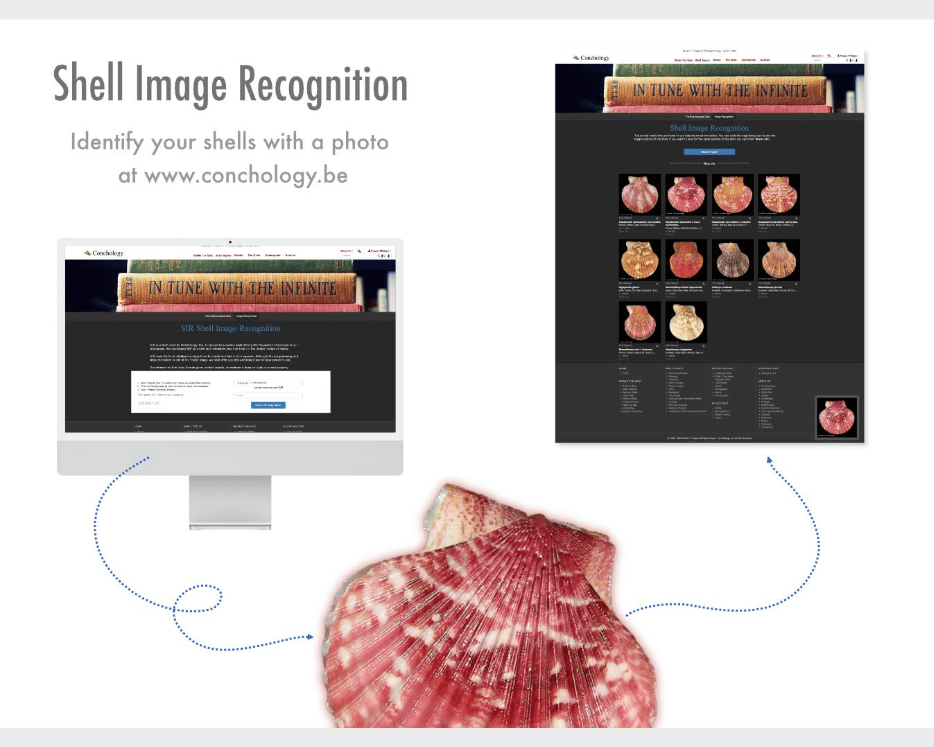Guest blog by Conchology, inc.
The goal of AI is to help improve various aspects of industries where there is room to do so. This is no more evident than through the collaboration of Conchology, Inc., and SentiSight.ai who combined services to produce an AI seashell identification system, powered by image recognition.
This is a guest blog post by our partners at Conchology, Inc, which discusses how this collaboration came together and why it has been so successful.
About Conchology, inc.
Conchology, Inc. is a company specializing in specimen seashells, operating in Cebu Light Industrial Park, Mactan Island, Philippines since 2003.
Our main conchological goals are supplying the world with the biggest databases on shells and supplying collectors, institutions, and museums with the widest possible diversity in fully documented quality shells.
Besides our Internet activities, we are also active in publishing books and journals about mollusks. In cooperation with other companies and museums, we aim to provide the best services and to enrich the malacological world with new computer and internet tools to achieve advancement in the taxonomic/nomenclature fields of science.
In our world, there are tens of thousands of different shells. They are among one of the most common animals. Despite being a very common sight in the sea and on land, it is not straightforward to accurately classify seashell identification.
This will require a great sacrifice in time. It takes years of practice and studies to become successful in identifying a shell.
To make a snail and seashell identification easier for our employees and website visitors, we started an ambitious project for the development of an image recognition tool.
Image Recognition
Launched in 2008, our first image recognition tool was an immediate success and has been a free feature available to our website visitors for a long time. Our tool was designed to help easily identify shells by using visual analytics on uploaded photographs from visitors.
It was developed using a mixture of open-source tools to match images based on fixed comparison parameters. It compared color, texture, and shapes found in the image. The basis for our tool was a database populated with over 30,000 images of 2000 different species of mollusks.
After extensive testing and user-based search statistics, it was shown that the database had to grow in quantity in order to achieve better results. We reached optimum results with a high degree of accuracy once we reached ~300,000 images within the data set. Unfortunately, it became too slow in order to be useful. Results could take minutes to show.
The limits of our first version started to show quite fast. We learned by studying the submitted photographs from our users, that if a shell or snail was photographed in nature, in a different position, or with a different background color, our image recognition tool could not give a good match. This is despite the species being included in the base dataset that was used to match images.
With the current limitations in place, we started working on a new version of our image recognition tool in which we wanted to incorporate machine learning.

Collaboration with Sentisight.ai to produce an AI Seashell Identification System
I came into contact with the Sentisight.ai team when doing research on how to improve our image recognition system with machine learning. After reading the technical specs of the beta software they had developed, I made contact to see if we could collaborate and create a new improved research tool.
Dr. Karolis Uziela was immediately interested to collaborate on this project and we began exchanging ideas.
It became clear that their AI-powered tools would overcome many of the limitations of our first version of the image recognition model. The Image Similarity Tools proved to be very successful in finding visually similar shells in our data set.
It did not take long before we had a plan ready for a newly improved seashell identification model. We created a base set of 150,000 images of mollusks that underwent machine learning pre-processing steps in the SentiSight.ai cloud.
The first results were very positive and we could immediately see a very different approach in the results. The more images of a certain species we could supply, the better the results were.
In SentiSight.ai we used the tagging system, to improve the results even further. A bonus was that even with big data sets of hundreds of thousands of information records, the system remained fast.
Once the data set pre-processing steps on SentiSight.ai were finished, it took our programmers only a few days to integrate and connect our homepage with the SentiSight.ai API to show the results on our homepages across the web.
Success story
Whereas the old recognition system had its limitations, it was already able to produce quality search results for our visitors. We could start the first wave of new research tools available to scientists studying shells or amateur scientist who just wants to know a name.
With SentiSight.ai we could build upon what we had learned and release a second and more advanced version of the image recognition tool, leading to increased accuracy in seashell identification for our visitors, particularly rare seashell identification which had previously proved troublesome.
Discover other applications besides seashell identification such as the use of image recognition for retail.
